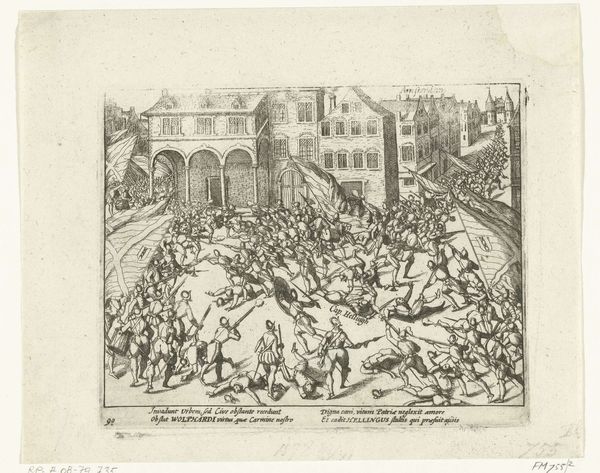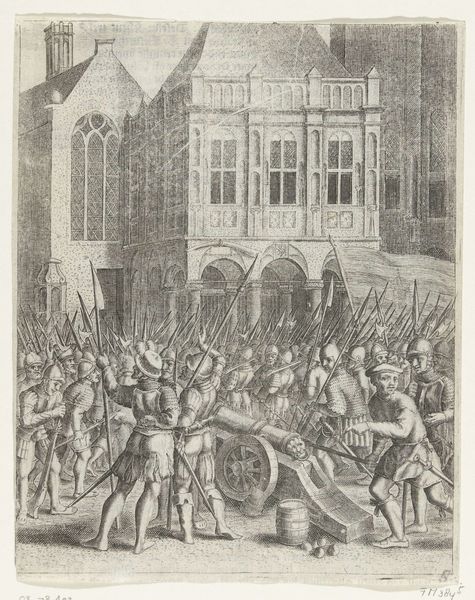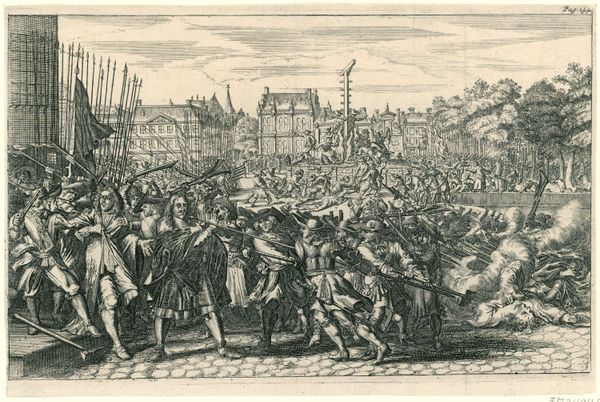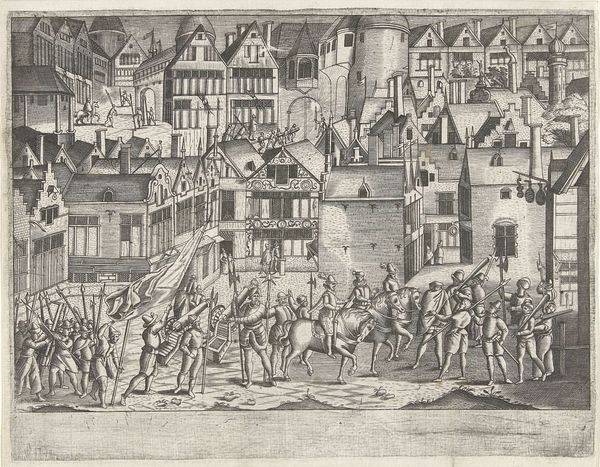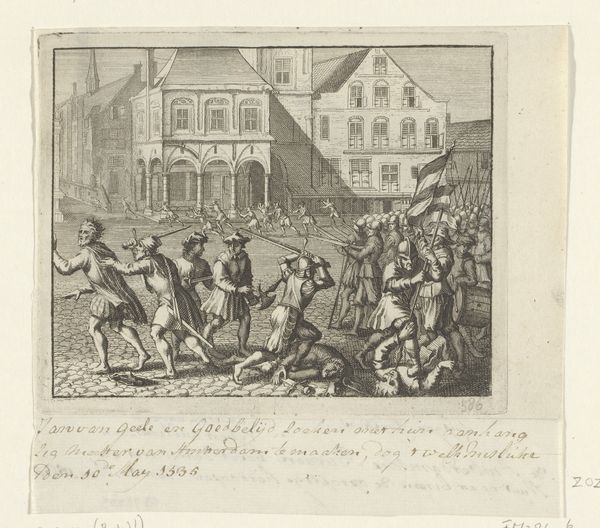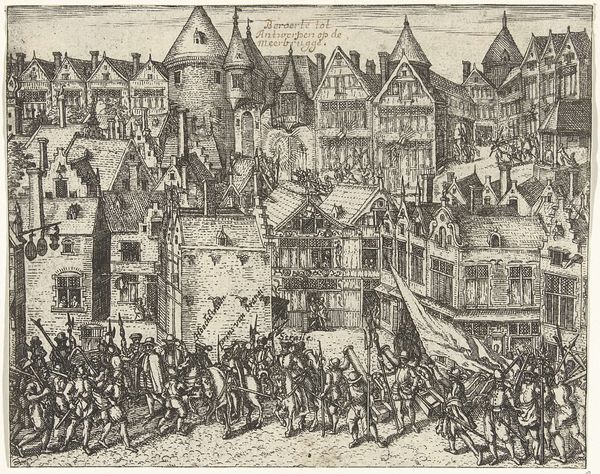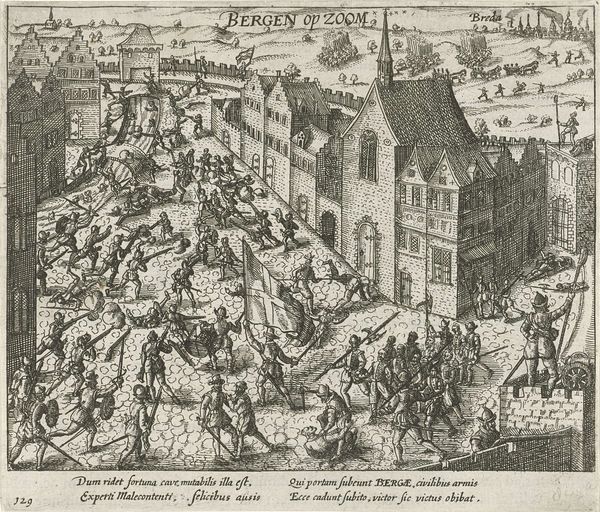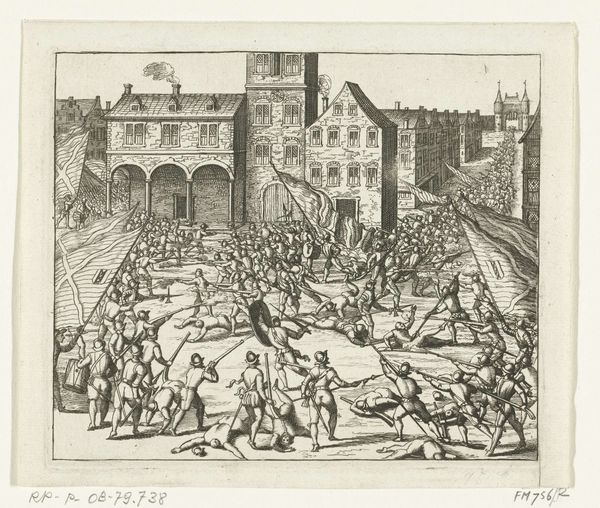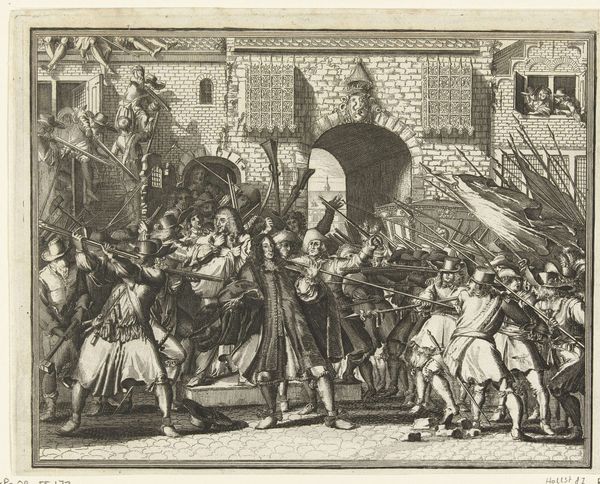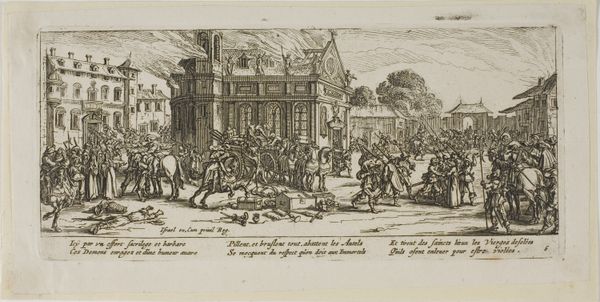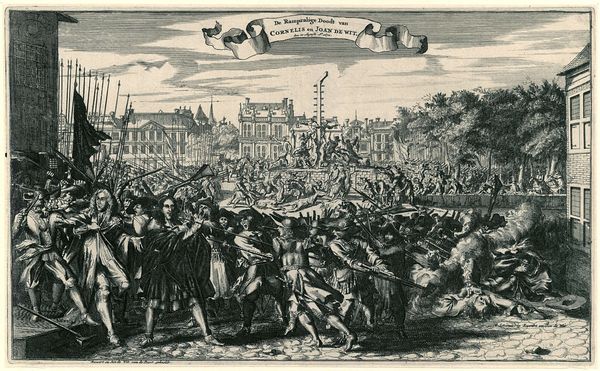
print, engraving
#
baroque
#
pen drawing
# print
#
figuration
#
genre-painting
#
history-painting
#
engraving
Dimensions: height 132 mm, width 169 mm
Copyright: Rijks Museum: Open Domain
Curator: This print by Herman Padtbrugge, created between 1704 and 1706, depicts "Fights Between Riders and Sailors in Hoorn, 1673". The artist employed engraving and pen drawing techniques, offering a dynamic historical genre scene. Editor: My first impression is that this piece is intensely energetic. The figures are so tightly packed, giving a claustrophobic and frantic sensation despite the limited greyscale. Curator: Precisely. It's crucial to contextualize such depictions of historical conflicts. These tumultuous clashes between riders and sailors were born out of specific social and political tensions of that time, perhaps disputes over resources, power, or societal hierarchies reflected in the composition of baroque art. Editor: From a purely formal perspective, look at how the artist has created depth despite the overall flatness. The buildings recede into the background, framing the chaos in the foreground. And how he manipulates light and shadow—notice the contrast created in such a confined place and style that directs our attention, pulling the eye around. Curator: And beyond the technical, there is the political dimension, that’s important to analyze. Who does the artist align with, the sailors, or the riders? How do power dynamics and societal inequalities influence how Padtbrugge represents them? The positioning of the riders towering on their mounts certainly suggests an assertion of dominance, or the houses above, showing powerful persons seeing the confrontation. Editor: You make an important point. I see the formal techniques mirroring these potential socio-political messages: for example, the riders are positioned slightly higher in the picture. Their angular, more aggressive posturing contrasts to the curved lines of the waves of rioting people and objects—giving weight and importance to the riders’ violence and dominance. Curator: Understanding such prints provides insight into how past events were interpreted and circulated. It encourages critical reflection on how narratives are constructed, especially within the context of social and historical power struggles. Editor: Analyzing the line work and the contrasting spaces of detail versus abstraction lets one delve into the historical understanding and narrative presented. This gives a visceral feeling of the historical and baroque setting and period! Curator: This piece, beyond just being a historical snapshot, is a visual statement steeped in historical tensions. Reflecting on these elements brings depth to our contemporary understanding. Editor: Agreed, and I will carry this insight to new artworks with its unique form, but similar topics and concepts to decode!
Comments
No comments
Be the first to comment and join the conversation on the ultimate creative platform.
